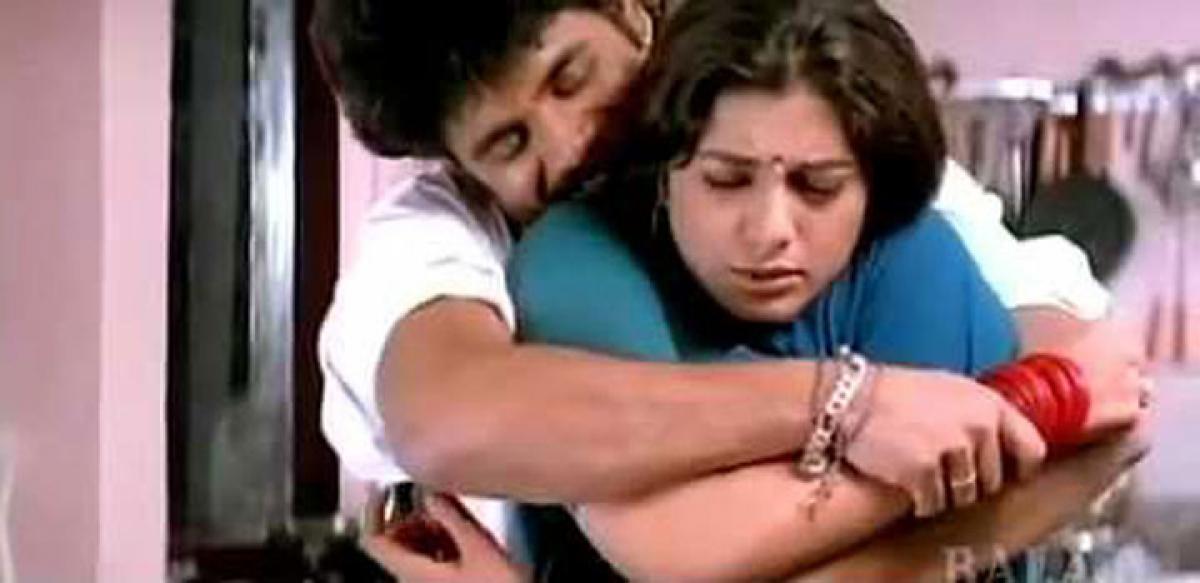Live
- Mohan Babu’s attack on journalists inhumane act
- West Quay-6 of VPA to get revamped
- Rajaiah demands govt to introduce SC categorisation Bill in Assembly
- Make all arrangements for smooth conduct of Group-2 exams
- CP congratulates chess champs
- Stage set for children’s science exhibition
- ‘Generation Green’ initiative to drive e-waste awareness
- Mysore royal family to get Rs 3,000 crore compensation for Palace Grounds
- Suspend officers who caned Panchamasali protesters: Bommai
- Unique move by student reaches over 1,500 in 8 countries
Just In

Nearly twenty years after it released in October 1996, the Nagarjuna-Tabu starrer ‘Ninne Pelladatha’ is still remembered fondly by legions of his fans, both male and female. The very ambience in which the film is set in, the soft-lit camerawork showing a blissful family in existence and soothing,
Nearly twenty years after it released in October 1996, the Nagarjuna-Tabu starrer ‘Ninne Pelladatha’ is still remembered fondly by legions of his fans, both male and female. The very ambience in which the film is set in, the soft-lit camerawork showing a blissful family in existence and soothing, melting music by Sandeep Chowta, working with Nag for the first time, all contributed equally well to make it an industry-hit and earning a permanent slot in the hearts of its viewers.
The jewel in the crown was it bagging the National Award for being the Best Feature Film in Telugu for that year, alongside the Filmfare Award.Not to miss out was the arresting presence of the 25-year-old Tabassum Fatima Hashmi, aka Tabu, who was returning to Telugu film industry after her first film ‘Coolie No: 1’ (1991).
Having taken off in Hindi by then, she was making a return of sorts, having done a guest role in ‘Sisindri’, a year earlier. And what a touchdown it was!1996 was also witness to a milestone in her screen life as it saw eight films of hers released, which was Tabu’s maximum multi-lingual releases till then.
In fact, the Tamil-Telugu bilingual ‘Kadhal Desam’ had already revved up her popularity quotient in both the film circuits quite a bit, having had a glorious run in the same period. She had another major release in Hindi with Gulzar’s ‘Maachis’, which elevated her image to an altogether different plane altogether.
For the romantic hero Nagarjuna, into his late-‘30s, it was his 44th film in a span of a decade by then. He too was basking in the glory of a few serial box-office successes, a year earlier, many of them made into Hindi with big names there. With his pairing with Tabu, began a new chapter of gossip surrounding his dalliances with femme fatales, a long list by then.
“Kannullo Nee Roopame, Gundello nee dhyaname” begins the song softly, in a lilt which Hariharan was alone known for in that time. The gurgling flute transports the viewer into the mood, which young lovers know very well by now - the rare moments of metime with one’s beloved. The heroine is suitably bashful as she gets physically close with her beau, while the hero is not totally devil-may-care, as he makes the first moves and keeps moving!
True to the songs of that time, most of the number is shot indoors, with a dip in the pool, adding up the steamy quotient as it progresses. The bashful nature of Tabu, with a trace of awkwardness in it makes it a compulsive watch as the lyrics go typically mushy: “Madi dachukunna rahasyanni vethiketi nee choopunnapedalaa….” she croons, in Chitra’s voice.
Both the characters go through spasms of imaginary and real experiences of being hopelessly in love, lapsing into a dreamy mood and snapping out of it, the next moment. A quick montage of shots establishing the visualisation of the director, Krishna Vamsi, making Tabu switch from a dream girl to an ideal housewife too is shown. Vamsi in any case is famed for shooting songs well in his films.
The gradual proximity of the pair, the increasing comfort between the two, moves the song at a languid, aching pace with no overt attempt at titillation, a tribute to the helmsman. The pace is calibrated, one seems to feel, to show the lingering passion, established through a series of mid-profile and long shots of the duo. A perfect composition to enjoy by closing one’s eyes, letting the mind wander and savouring the pleasant images as they run through deep inside!

© 2024 Hyderabad Media House Limited/The Hans India. All rights reserved. Powered by hocalwire.com







